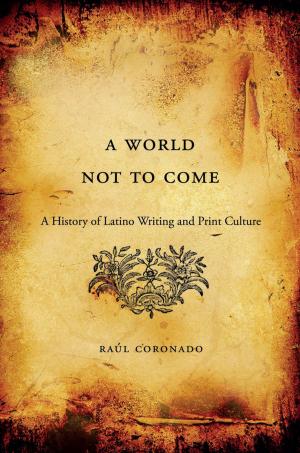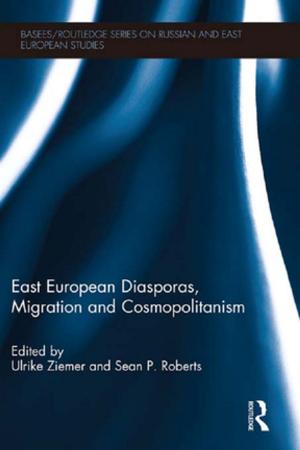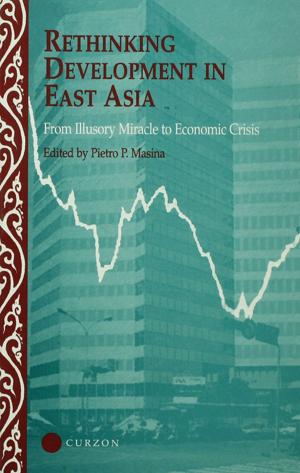The Peoples of Sicily
A Multicultural Legacy
Nonfiction, Social & Cultural Studies, Social Science, Cultural Studies, Ethnic Studies| Author: | Louis Mendola, Jacqueline Alio | ISBN: | 9780991588688 |
| Publisher: | Trinacria Editions LLC | Publication: | November 10, 2014 |
| Imprint: | Trinacria Editions LLC | Language: | English |
| Author: | Louis Mendola, Jacqueline Alio |
| ISBN: | 9780991588688 |
| Publisher: | Trinacria Editions LLC |
| Publication: | November 10, 2014 |
| Imprint: | Trinacria Editions LLC |
| Language: | English |
Can the eclectic medieval history of the world's most conquered island be a lesson for our times?
Home to Normans, Byzantines, Arabs, Germans and Jews, 12th-century Sicily was a crossroads of cultures and faiths, the epitome of diversity. Here Europe, Asia and Africa met, with magical results. Bilingualism was the norm, women's rights were defended, and the environment was protected. Literacy among Sicilians soared; it was higher during this ephemeral golden age than it was seven centuries later.
But this book is about more than Sicily. It is a singular, enduring lesson in the way multicultural diversity can be encouraged, with the result being a prosperous society. While its focus is the civilizations that flourished during the island's multicultural medieval period from 1060 to 1260, most of Sicily's complex history to the end of the Middle Ages is outlined. Idrisi is mentioned, but so is Archimedes.
Introductory background chapters begin in the Neolithic, continuing to the history of the contested island under Punics and Greeks. Every civilization that populated the island is covered, including Romans, Goths, Vandals, Byzantines, Arabs, Normans, Germans, Angevins, Aragonese and Jews, with profiles of important historical figures and sites. Religion, law, geography and cuisine are also considered.
The authors' narrative is interesting but never pedantic, intended for the general reader rather than the expert in anthropology, theology, art or architecture. They are not obsessed with arcane terminology, and they don't advocate a specific agenda or world view. Here two erudite scholars take their case to the people.
Yes, this book actually sets forth the entirety of ancient and medieval Sicilian history from the earliest times until around 1500, and it presents a few nuggets of the authors' groundbreaking research in medieval manuscripts. Unlike most authors who write in English about Sicily, perhaps visiting the island for brief research trips, these two are actually based in Sicily, where their work appears on a popular website. Sicily aficionados will be familiar with their writings, which have been read by some ten million during the last five years, far eclipsing the readership of any other historians who write about Sicily. Alio and Mendola are the undisputed, international "rock stars" of Sicilian historical writing, with their own devoted fan base. Every minute of the day somebody is reading their online articles.
This is a great book for anybody who is meeting Sicily for the first time, the most significant 'general' history of the island published in fifty years and certainly one of the most eloquent. It has a detailed chronology, a useful reading list, and a brief guide suggesting places to visit. The book's structure facilitates its use as a ready reference. It would have run to around 600 pages, instead of 368 (on archival-quality, acid-free paper), were it not for the slightly smaller print of the appendices, where the chronology, the longest Sicilian timeline ever published, is 20 pages long.
Unlike most histories of Sicily, the approach to this one is multifaceted and multidisciplinary. In what may be a milestone in Sicilian historiography, a section dedicated to population genetics explains how Sicily's historic diversity is reflected in its plethora of haplogroups.
Here medieval Sicily is viewed as an example of a tolerant, multicultural society and perhaps even a model. It is an unusually inspiring message. One reader was moved to tears as she read the preface.
Can a book change our view of cultures and perhaps even the way we look at history? This one just might.
Meet the peoples!
Can the eclectic medieval history of the world's most conquered island be a lesson for our times?
Home to Normans, Byzantines, Arabs, Germans and Jews, 12th-century Sicily was a crossroads of cultures and faiths, the epitome of diversity. Here Europe, Asia and Africa met, with magical results. Bilingualism was the norm, women's rights were defended, and the environment was protected. Literacy among Sicilians soared; it was higher during this ephemeral golden age than it was seven centuries later.
But this book is about more than Sicily. It is a singular, enduring lesson in the way multicultural diversity can be encouraged, with the result being a prosperous society. While its focus is the civilizations that flourished during the island's multicultural medieval period from 1060 to 1260, most of Sicily's complex history to the end of the Middle Ages is outlined. Idrisi is mentioned, but so is Archimedes.
Introductory background chapters begin in the Neolithic, continuing to the history of the contested island under Punics and Greeks. Every civilization that populated the island is covered, including Romans, Goths, Vandals, Byzantines, Arabs, Normans, Germans, Angevins, Aragonese and Jews, with profiles of important historical figures and sites. Religion, law, geography and cuisine are also considered.
The authors' narrative is interesting but never pedantic, intended for the general reader rather than the expert in anthropology, theology, art or architecture. They are not obsessed with arcane terminology, and they don't advocate a specific agenda or world view. Here two erudite scholars take their case to the people.
Yes, this book actually sets forth the entirety of ancient and medieval Sicilian history from the earliest times until around 1500, and it presents a few nuggets of the authors' groundbreaking research in medieval manuscripts. Unlike most authors who write in English about Sicily, perhaps visiting the island for brief research trips, these two are actually based in Sicily, where their work appears on a popular website. Sicily aficionados will be familiar with their writings, which have been read by some ten million during the last five years, far eclipsing the readership of any other historians who write about Sicily. Alio and Mendola are the undisputed, international "rock stars" of Sicilian historical writing, with their own devoted fan base. Every minute of the day somebody is reading their online articles.
This is a great book for anybody who is meeting Sicily for the first time, the most significant 'general' history of the island published in fifty years and certainly one of the most eloquent. It has a detailed chronology, a useful reading list, and a brief guide suggesting places to visit. The book's structure facilitates its use as a ready reference. It would have run to around 600 pages, instead of 368 (on archival-quality, acid-free paper), were it not for the slightly smaller print of the appendices, where the chronology, the longest Sicilian timeline ever published, is 20 pages long.
Unlike most histories of Sicily, the approach to this one is multifaceted and multidisciplinary. In what may be a milestone in Sicilian historiography, a section dedicated to population genetics explains how Sicily's historic diversity is reflected in its plethora of haplogroups.
Here medieval Sicily is viewed as an example of a tolerant, multicultural society and perhaps even a model. It is an unusually inspiring message. One reader was moved to tears as she read the preface.
Can a book change our view of cultures and perhaps even the way we look at history? This one just might.
Meet the peoples!















